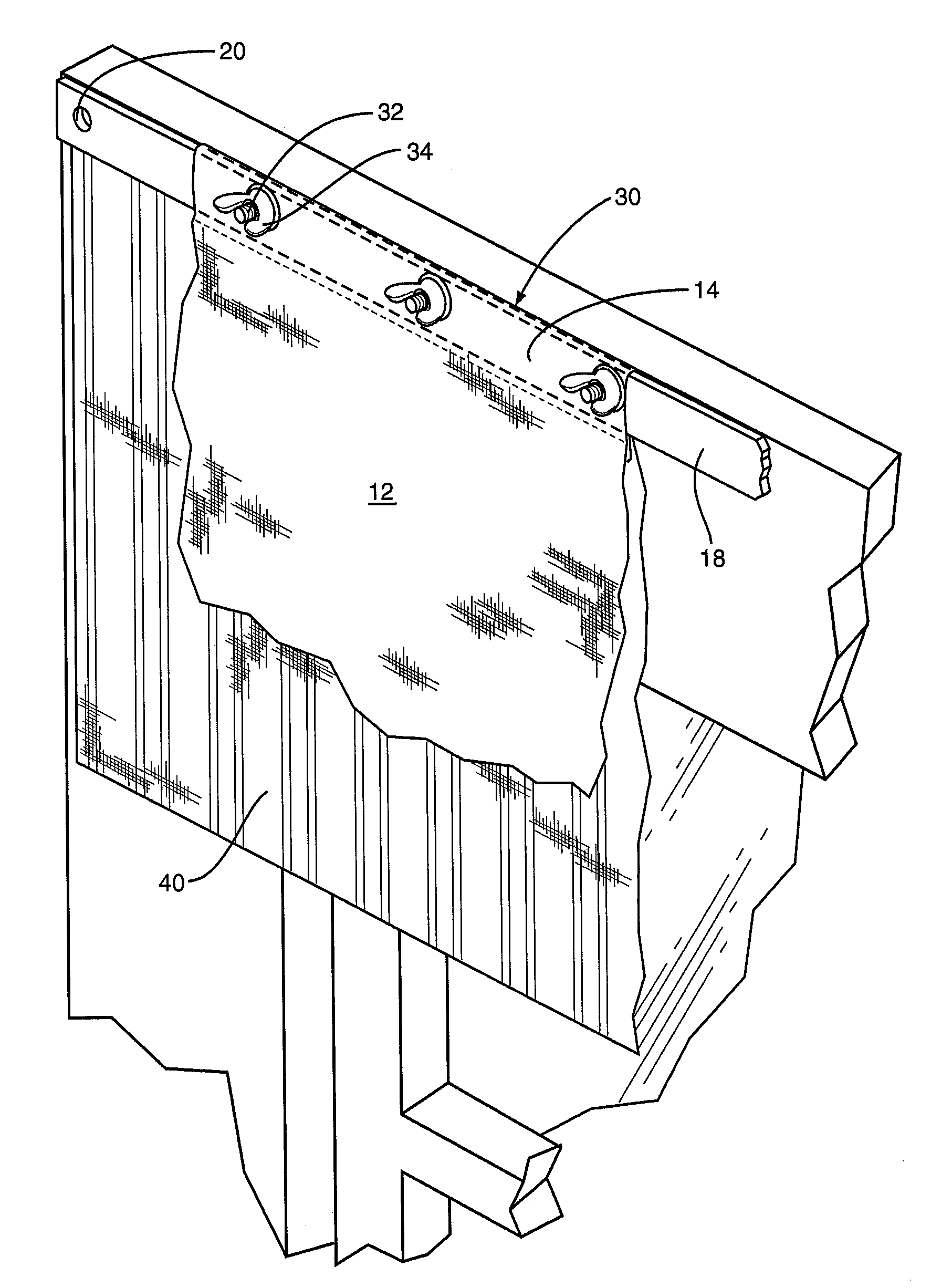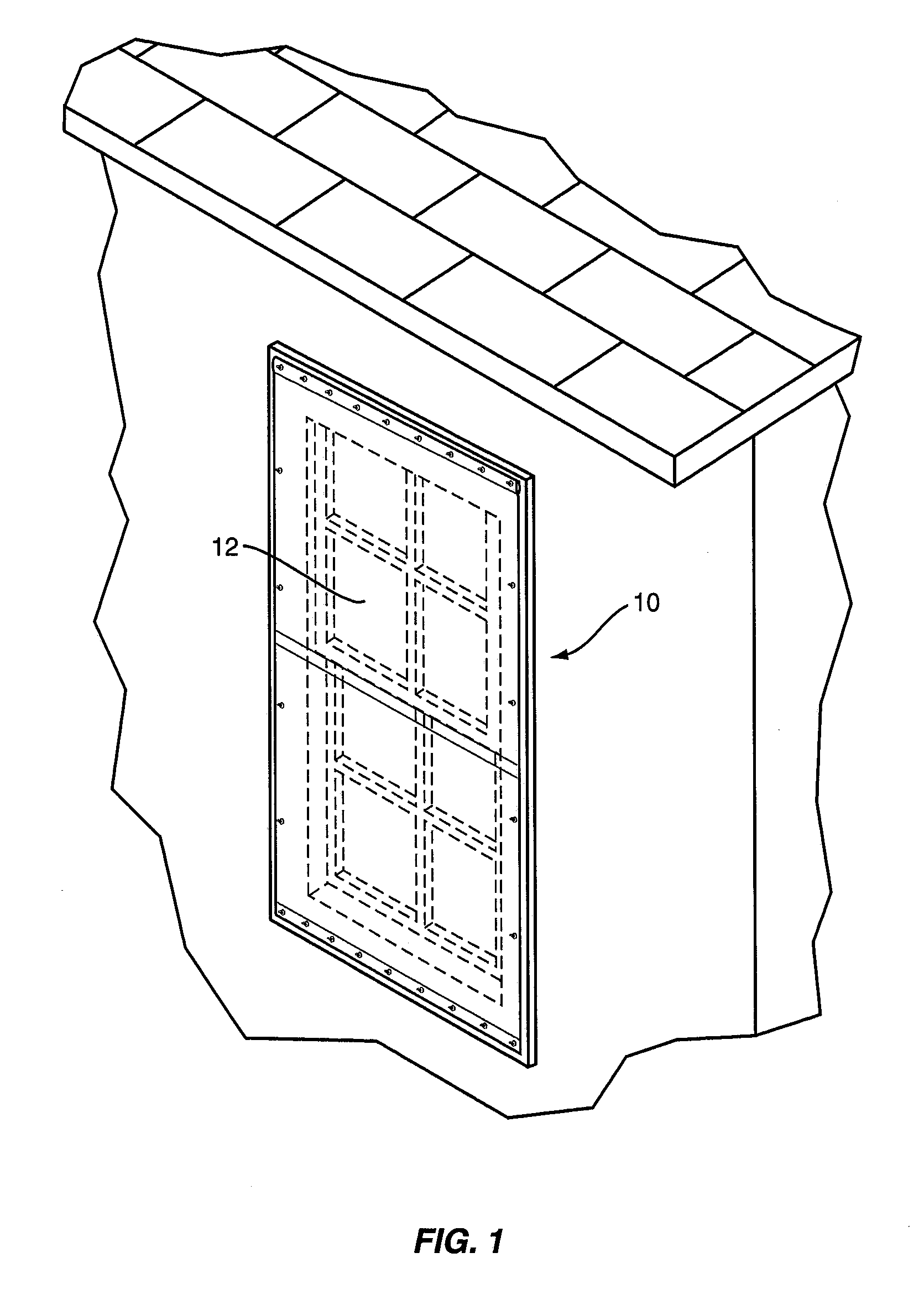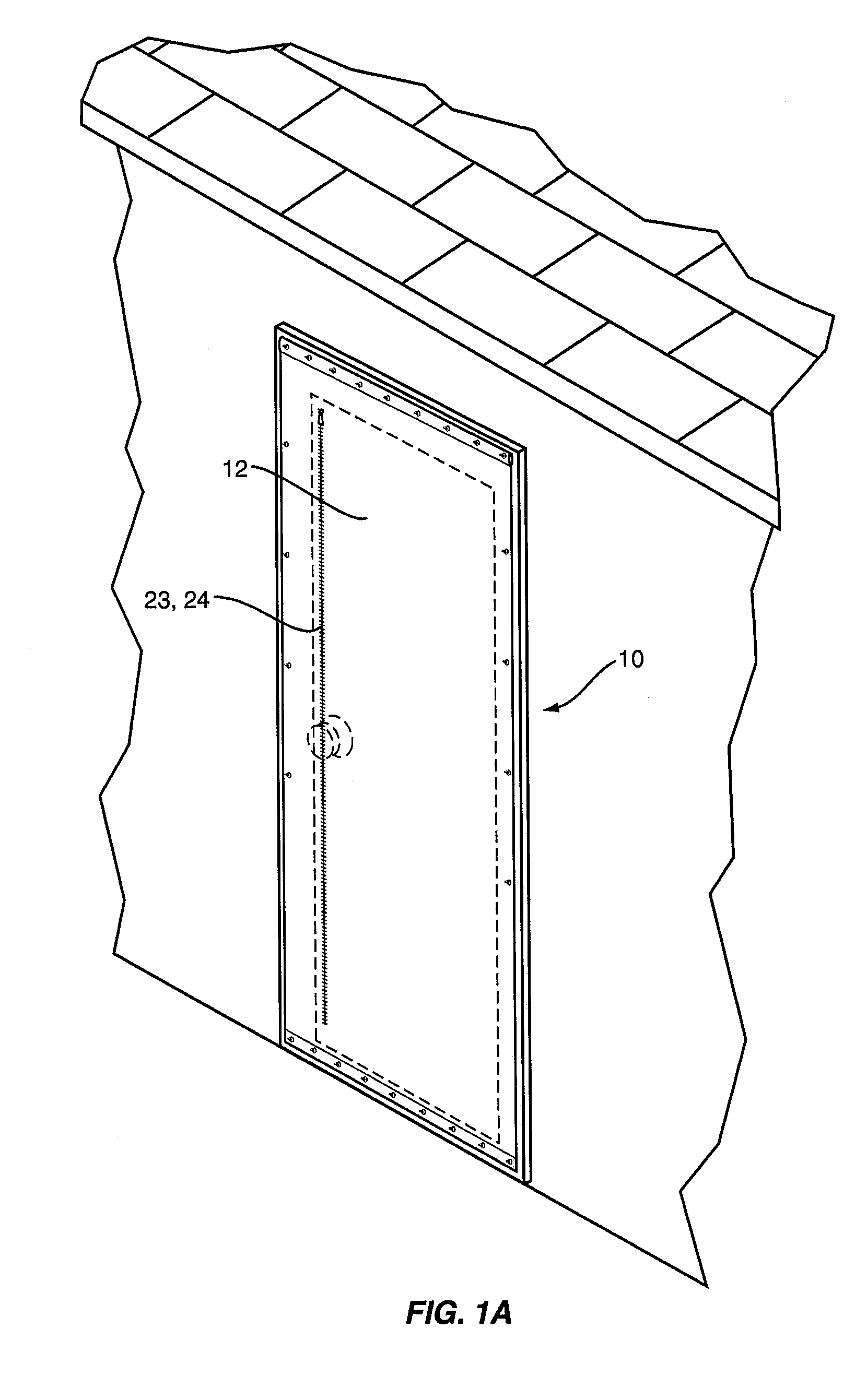Storm Panel for Protecting Windows and Doors During High Winds
a technology for windows and doors and storm panels, applied in the field of storm panels, can solve problems such as unsatisfactory solutions, and achieve the effects of high strength, high tenacity and high strength
- Summary
- Abstract
- Description
- Claims
- Application Information
AI Technical Summary
Benefits of technology
Problems solved by technology
Method used
Image
Examples
example 1
[0052]A flexible composite fabric was formed from a single ply fabric made of ultra high molecular weight, extended chain polyethylene fibers. The fibers were Spectra® 900, 650 denier yarn available from Honeywell International Inc. and had a tenacity of 30.5 g / d. The fabric was in the form of a plain weave woven fabric (style 904 made by Hexcel Reinforcements Corp.), characterized as having a weight of 6.3 oz / yd2 (0.02 g / cm2), 34×34 ends per inch (13.4×13.4 ends per cm), a yarn denier of 650 in both the warp and weft, and a thickness of 17 mils (425 μm). The fabric was laminated on both sides to a low density polyethylene film having a thickness of 1.5 mil (37.5 μm). A 4 mil (100 μm) film of ethylene vinyl acetate was used as a bonding layer between the fabric layer and the two polyethylene film layers. The layers were laminated together by a thermal lamination technique as described in U.S. Pat. Nos. 6,280,546 and 6,818,091. A No. 15 Big Zip, Part No. 1541E was installed in a hori...
example 2
[0056]A flexible composite fabric was formed from a single ply fabric made of extended chain polyethylene fibers. The fibers were Spectra® 900, 1200 denier yarn available from Honeywell International Inc. and had a tenacity of 30 g / d. The fabric was in the form of a basket weave woven fabric (style 912 made by Hexcel Reinforcements Corp.), characterized as having a weight of 11.3 oz / yd2 (0.044 g / cm2), 34×34 ends per inch (13.4×13.4 ends per cm), a yarn denier of 1200 in both the warp and weft, and a thickness of 28 mils (700 μm). The fabric was laminated on both sides to a low density polyethylene film having a thickness of about 2 mils (10 μm). A 7-8 mil (175-200 μm) film of ethylene vinyl acetate was used as a bonding layer between the fabric and the two polyethylene film layers. The layers were laminated together by a thermal lamination technique as described in U.S. Pat. Nos. 6,280,546 and 6,818,091. A No. 15 Big Zip, Part No. 1541E was installed in a vertical slit in the fabric...
PUM
 Login to View More
Login to View More Abstract
Description
Claims
Application Information
 Login to View More
Login to View More - R&D
- Intellectual Property
- Life Sciences
- Materials
- Tech Scout
- Unparalleled Data Quality
- Higher Quality Content
- 60% Fewer Hallucinations
Browse by: Latest US Patents, China's latest patents, Technical Efficacy Thesaurus, Application Domain, Technology Topic, Popular Technical Reports.
© 2025 PatSnap. All rights reserved.Legal|Privacy policy|Modern Slavery Act Transparency Statement|Sitemap|About US| Contact US: help@patsnap.com



